Gary Telecsan
Reviews By Author
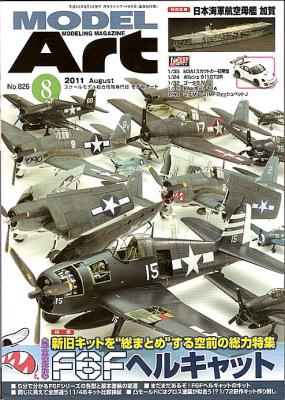
|
Model Art Modeling Magazine, #826, August 2011Published:
The August offering from Model Art Modeling Magazine starts off with 44 pages of photos and text (in Japanese, with an occasional English subtitle) dedicated to the F6F Hellcat, with reviews of Eduard, Hobby Boss, and Monogram kits, among others, from 1/144th scale up to 1/48th. A wealth of close-up photos showing trouble spots and finished kits is available for aficionados of this aircraft. Next comes 5 pages of information about Japanese Navy destroyers, illustrating differences from 1933 through 1945 with photos of 1/700 kits for illustration. This is followed by several pages of walk-around detail shots of a JASDF H-21, very useful for modelers of this subject. This appears to be a monthly feature, the H-21 being August. Several reviews follow, all with excellent… more |
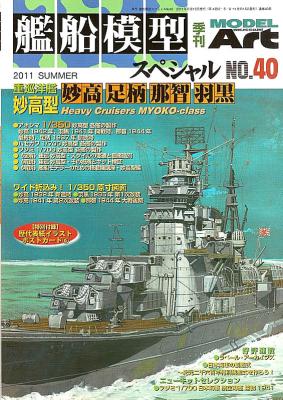
|
Model Art Modeling Magazine, #40, Summer 2011 Special EditionPublished:
This special Summer edition from Model Art Modeling Magazine is primarily dedicated to the IJN Myoko-class Heavy Cruiser. Fully 99 pages of the total 136 are devoted to photos, history, and kit reviews. Included is a magnificent set of 1/350th scale plans for the Myoko, and builds in 1/350th are reviewed for Myoko, Haguro and Nachi illustrating not only differences in sisters in the same class, but changes and upgrade through the years. A 1/700th review of a build of 4 cruisers is included with photo coverage and a number of pages devoted to the aircraft carried by this class from pre-war through to the end. There is also pull-out art work, and wartime photos to match kits reviewed. The new kit section reviews CVE-73, a Japanese carrier, and the Revell SS Oriana in some detail… more |
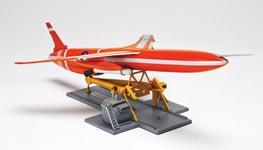
|
Northrop Snark SM-62 Cruise MissilePublished:
Talk about a trip down memory lane…I first built this kit nearly 50 years ago. The Snark was America’s first surface-to-surface cruise missile, and was developed back when the expense of a manned bomber fleet made missiles seem mighty attractive. It was deployed from 1958-1961, and passed into history without ever having been fired in anger; which was just as well, being that the mean time between failures of its guidance system was less than the flight time to most of the targets of the time. The actual box art image is not available on-line; I included the photo the web site uses in the catalog. The web site lists 198 parts, but there are actually only 31, even counting the two crew figures. The mold is still crisp with very little flash, but the kit does show its age.… more |
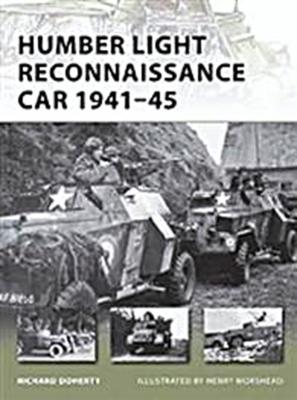
|
Humber Light Reconnaissance Cars 1941-45Published:
“This is #177 in the New Vanguard Series which explores the design, development, operation and history of the machinery of warfare through the ages.” So says the tag line of Osprey’s advertising copy, and it is a fair description of the contents of this volume. The author, Richard Doherty, has a number of books to his credit, the most notable of which are about the reconnaissance corps which used the Humber car during the Second World War. The Humber Light Reconnaissance Car (LRC) was borne from desperation after the battles in France and was the eventual winner of the design competition, some 2,400 being completed of the 4 marks (Mk I Ironside, Mk II, Mk III, and Mk IIIA) in total. The LRC, while the most widely used recon car in the British army, never really realized… more |
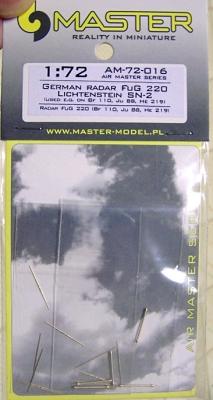
|
FuG 220 Liechtenstein SN-2 Radar AerialsPublished:
This incredibly detailed and finely crafted set of replacement aerials for the Funk Gerate 220 SN-2 Liechtenstein radar has to be seen to be believed. My poor modeling skills simply do not do them justice. The first photo shows the package, and inside one finds 14 brass pieces, 5 for the horizontal portion and 9 for the vertical, which assemble into 4 aerials. There is one each extra piece for oopsies. The instructions are clear and simple. To get the best results, these must be assembled by soldering The FuG 220 was installed on several models of the Bf-110, Ju-88 G, and HE-219 A, in two separate orientations. I could not find a reference which supports its installation in the Do-217 series, but my research is by no means exhaustive. Figures 2 and 3 show the kit parts for the… more |
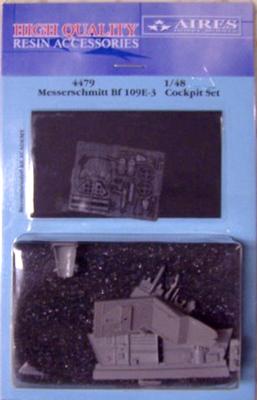
|
Bf 109 E CockpitPublished:
This set consists of 11 resin and 19 photoetch parts, and one sheet of film from which 4 parts are to be cut. There are two more each of photoetch and resin than are shown on the instructions, but there was no issue with assembly. The set is intended to replace the cockpit floor, seat, sidewalls and instrument panels which come with the Academy kit. I confirmed that it will also fit the Tamiya E-3, and with some more drastic surgery, could be made to fit even the Hobbycraft kit. The first pictures are of the packaging and the set’s parts and then a shot of the kit’s fuselage halves, from which you will have to remove the sidewalls. I do not picture the process here, but it can easily be seen that the Aries sidewalls are much nicer. The kit cockpit floor and seat are also very… more |
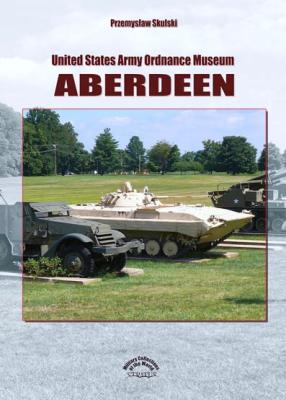
|
United States Army Ordnance MuseumPublished:
This is the second book in the MMP Stratus “Military Collections of the World” series. It begins with a short, 9 page illustrated history of the Aberdeen Proving Ground and the Museum, and the rest of the book is dedicated to a photo documentation of the museum’s exhibits. The first 9 pages show the Museum’s inside exhibits, uniforms, small arms, small artillery pieces and one or two smaller vehicles, and the rest of the book shows the portion of the collection stored outside. There are at least two views of each vehicle or field piece, and some commentary, in English, about the vehicle displayed. Often the exhibit’s provenance is given, and some comments about its condition. I found the book engrossing as I had no idea that Aberdeen’s collection was so varied. The photos… more |
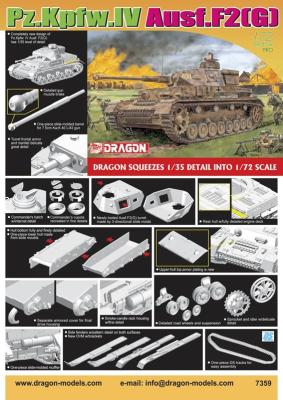
|
Pz IV F2 (G)Published:
Dragon advertises that they squeeze 1/35th detail into 1/72nd scale – and I can testify that they do indeed! The Pz IV F2 was the first of the series to mount a long 75mm gun. Originally designed to carry the short 75mm in an infantry support role, the gun versus armor race in early WWII found the Germans up-gunning the Pz IV to meet the threat posed by heavier Allied tanks. The first Pz IV F2’s, called Mark IV Specials by the British, appeared in March 1942.
|
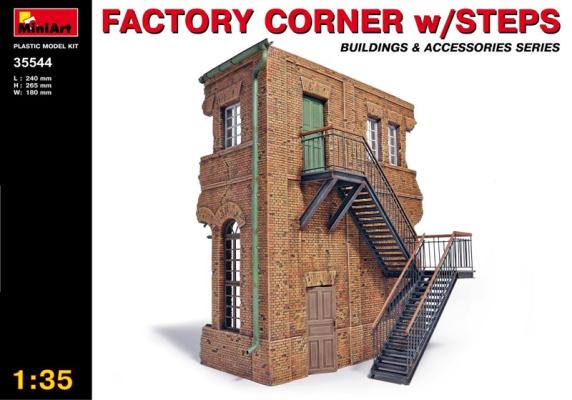
|
Factory Corner w/StepsPublished:
This kit is composed of 12 sprues of injection molded plastic containing 219 parts plus 4 vacuum-formed sheets. The vacuform represent the building sides, two sheets for each of the 2 building sides. For those familiar with MiniArt kits, the sprues containing the parts for the stairs are the same ones contained in many of their kits, and this time they will be assembled in another one of the many ways they go together. Brilliant production work! This kit builds up to a spectacular diorama base, but much care needs to be taken during its construction as it is very fragile. I recommend reading the entire review before starting on the kit as there are a number of issues upon which the instructions do not touch that need thought before you apply the glue. I started with the… more |
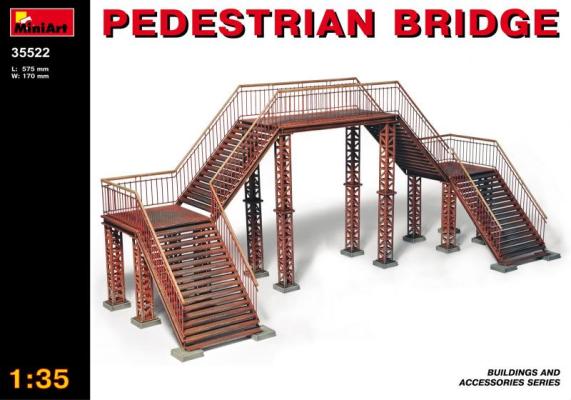
|
Pedestrian BridgePublished:
Having no knowledge of this series of MiniArt kits, I was expecting about 5 pieces of resin to clean up, prep, slap together quickly, paint and weather. Wrong! One finds upon opening the box 464 grey plastic pieces on 48 sprues. However, there are only 3 different sprues, each repeated 16 times. Instructions are line illustrations on two double-sided 8x11 sheets, and are pretty straightforward – more on this later. When the dust has settled, you will not only have a brilliant diorama accessory but also a number of extra parts left over which will be extremely useful for the diorama hound. This kit is designed not as a stand alone kit but as a backdrop for a 1/35th scale diorama. As such, it is a brilliant design. At 25” long when complete in its intended form, it is… more |
